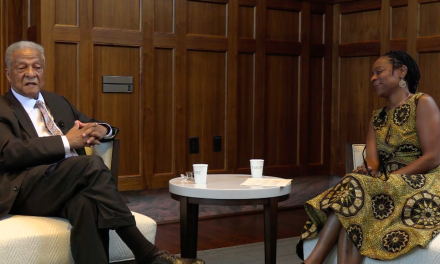Emory’s Center for Faculty Development and Excellence increased the number of University Courses they offer from one to three this semester in order to promote discussion among students and faculty on topics such as violence, networks and labor.
These courses, which are open to both undergraduate and graduate students, explore a particular topic in depth. Each time a class meets, different guest lecturers from various schools of the University teach students to approach a topic from a variety of disciplines.
The University is offering “Violence: A Multidisciplinary Inquiry,” “Network Science: Theory, Method and Applications” and “Labor, Development and Democracy,” the University announced in a Jan. 28 press release.
Previously, the Center for Faculty Development and Excellence has only offered one University course each spring since 2011, according to Associate Director of the Center for Faculty Development and Excellence Donna Troka.
However, Troka said offering three classes at once this semester has been a successful endeavor so far.
Fifteen to 20 students are enrolled in each class, and many faculty members have volunteered to guest lecture this semester, according to Troka.
While the lecturers change every time the classes meet, the conveners, or faculty members who proposed the course topics, attend each session during the semester, according to the Center for Faculty Development and Excellence website.
Director for the Center for Injury Control, Associate Professor at the School of Medicine and Rollins School of Public Health and one of the course conveners of “Violence: A Multidisciplinary Inquiry” Deb Houry said the class will be heavily discussion-based.
The class will also involve blogging and journaling to encourage students to share their own experiences with the subject material as opposed to having a lecturer tell them what to think, Houry said.
Pamela Scully, chair of the Department of Women’s Gender and Sexuality Studies, said that students benefit from learning how to approach the topic of violence from the perspectives of a variety of disciplines, such as law, history or theology. Scully is a professor of African Studies and a convener for the class, “Violence: A Multidisciplinary Inquiry.”
The diversity of the students’ backgrounds creates a learning community unique to the University Course, according to Scully.
She said a smaller class size facilitates this communal learning experience because it allows students to become familiar with one another. It was immediately evident that students were learning from one another after just one class, Scully said.
The University Course not only benefits students, but also faculty, according to Troka.
“It opens up possibilities for faculty collaborations that otherwise might not happen,” she said. “I would like to think that faculty are learning from one another as well.”
Additionally, the University Course provides professors a chance to come in contact with students whom they may not have otherwise been able to reach, she said.
Troka said faculty members have already begun sending her proposals for University Courses in Spring 2014.
She added that the Center for Faculty Development and Excellence plans to continue offering University Courses so long as there is continued student and faculty interest.
Scully foresees the University Course becoming an enduring part of Emory’s curriculum.
“Emory’s size is big enough to draw lots of people, but small enough to get to know colleagues and student from different schools,” she said. “[The University Course] plays to Emory’s strengths.”
– By Elizabeth Howell
ehowel5@emory.edu
The Emory Wheel was founded in 1919 and is currently the only independent, student-run newspaper of Emory University. The Wheel publishes weekly on Wednesdays during the academic year, except during University holidays and scheduled publication intermissions.
The Wheel is financially and editorially independent from the University. All of its content is generated by the Wheel’s more than 100 student staff members and contributing writers, and its printing costs are covered by profits from self-generated advertising sales.




